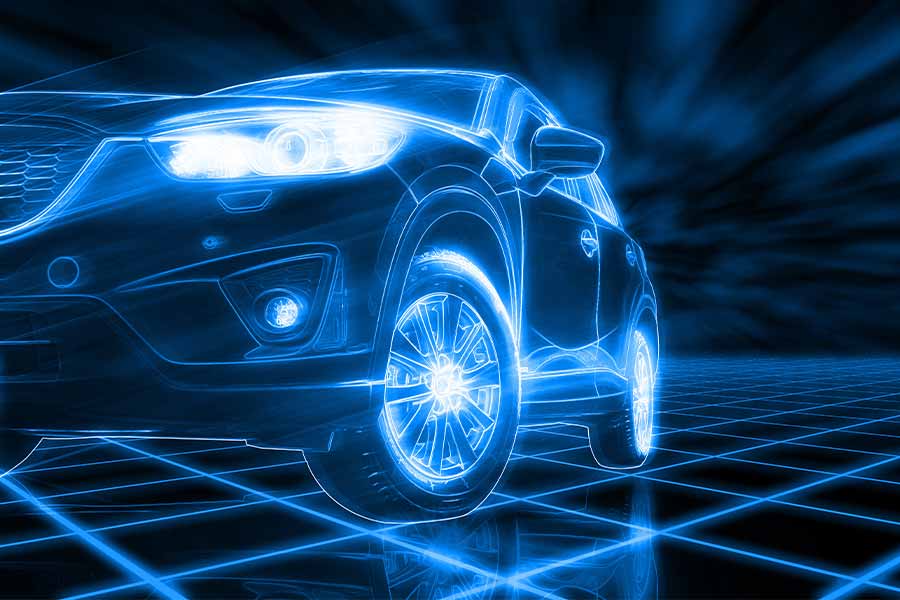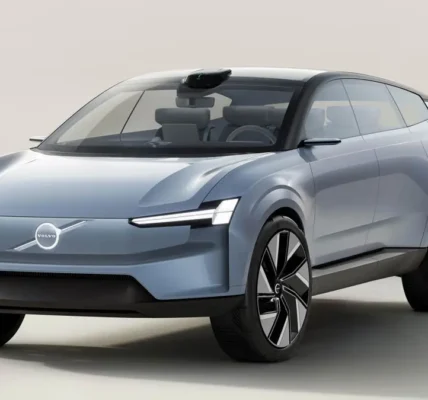India has set an ambitious target of completely replacing fossil fuel vehicles with electric vehicles (EVs) by 2030. Currently, there are about 1.33 million electric vehicles, with more than half of them e-rickshaws. In the 2019 financial year, only 0.8% of total vehicle registrations were electric.
In 2019, the government approved Phase II of the FAME India Scheme, (Faster Adoption and Manufacture of Hybrid and Electric Vehicles), an incentive programme for the promotion of electric and hybrid vehicles in the country. The goal of the second phase aimed to generate demand for electric vehicles, specifically 7,000 buses, 500,000 three-wheelers, 55,000 passenger cars (including hybrids) and 1 million two-wheel electric vehicles over a three-year period ending 2022.
CURRENT TRACK
India launched the e-AMRIT portal at the UN Climate Change Conference, or COP26 Summit, in November 2021, as a one-stop shop for all information on EVs in the country, such as charging locations, financing options, investment opportunities, government policies and subsidies. According to data on the site, only New Delhi and Assam and Tripura states have more than 1,000 EVs for every 100,000 non-electric ones. There were more than five EV charging outlets for every 100 petrol pumps only in New Delhi, Goa and Chandigarh.
Delhi Transport Minister Kailash Gahlot on 22 August announced a target of having one charging point within a radius of three kilometres without specifying a deadline. However, the state minister was confident that New Delhi will be able to achieve the target of 25% EVs of total vehicle registrations by 2024.
Meanwhile, the total number of electric vehicles on Indian roads is likely to touch 50 million by 2030, presenting an enormous opportunity for players in the charging ecosystem, according to a report by consultancy firm KPMG.
While favourable government policy is a catalyst, changing consumer preferences can truly tip the scale, says Anubhav Kapoor, the director of legal affairs at Ford India in Pune. He says the trend is evident in the increasing number of people opting for electric vehicles, despite them being costlier.
“There are several indicators of a fundamental shift in consumer behaviour and an increasing inclination towards electric vehicles, the biggest being the running and maintenance costs,” Kapoor told India Business Law Journal. “For a two-wheeler electric vehicle, the cost of charging is about 15-20% of the cost of fuel for an internal combustion vehicle. Undoubtedly, EVs have a good case purely from the cost of running perspective.”
With petrol prices way past the INR100 (USD1.25) per litre mark all over India, a daily commute to work and back home of around 40km will cost INR15,000-18,000 per month – that is, 15-30% of the average office worker’s salary.
An electric car doing the same distance will cost INR3,000 a month to run, Kapoor points out. However, these opportunities present associated challenges, too.
“For four-wheelers, the premium paid for EVs goes as high as 50% more than the cost of an ICE [internal combustion engine] four-wheeler,” he says. “This high upfront cost is not favourable for value-conscious Indian consumers who would prefer a cheaper ICE vehicle. Other challenges like range anxiety, high battery prices, poor density of the charging stations, etc., seriously limit the ease of EV usage,”
Manufacturers are doing their part to boost the availability of chargers, batteries and components. In August, Korean automaker Kia launched India’s fastest EV charger unit in the state of Kerala. The 240kWh DC fast charger for electric passenger vehicles improved on the company’s own 150kWh facility at Gurgaon launched a month earlier.
Meanwhile, the Mahindra group has linked with Volkswagen to source components for their upcoming electric cars. Under the agreement, the German company could potentially supply parts for 1 million vehicles till the end of the decade, it was reported.
Increasing EV choices, dedicated charging facilities and new offerings from manufacturers have given consumers new options. Along with them come consumer concerns and redressal for grievances, which pose a major challenge due to a lack of legal governance. The picture turns bleaker when the issues of vehicle hacking and data governance are taken into consideration.
APPLES AND ORANGES
“The inherent difference between the functioning of a fossil-fuel motor vehicle and an EV makes it difficult to have the same set of laws for both. This necessitates a different regulatory regime for the EV sector, but that has not yet happened,” says Neeraj Dubey, a partner at Juris Corp in Bengaluru who advises clients on the auto sector.
The core difference between an EV and a fossil-fuel vehicle is that the latter is an assembly of various machines and associated parts, each governed by manufacturing standards and regulations, while the former is essentially a motor that runs on a battery. Up to 70% of an electric vehicle’s internal parts differ from those of an ICE-powered vehicle. That includes the moving parts, with EVs having just four moving parts – the electric motor, transmission, rotor and drivetrain – compared with hundreds of moving parts in ICE vehicles.
Moreover, EVs generate a lot of user data, from engine use, distance covered, navigation and even information from connected devices. The Ministry of Road Transport and Highways is ill-equipped to monitor data protection and user privacy.
Regulations for the EV sector have been under the aegis of the Ministry of Heavy Industries & Public Enterprises. The setting up of the National Mission for Electric Mobility to promote electric mobility and manufacturing of EVs in India was followed by the establishment of a National Board for Electric Mobility by the Department of Heavy Industry, under the Ministry of Heavy Industries, to act as the apex government body for making recommendations. These measures have been commendable and created the right momentum, says Dubey.
FAME, the equivalent of the Bharat Standards for internal combustion vehicles, was launched in 2015. FAME Phase II is currently a part of the National Electric Mobility Mission Plan 2020, a document providing the vision and roadmap for the faster adoption of EVs and their manufacturing in the country.
“The regime for EVs in India has evolved as a more conscious effort to induce and promote EV adoption in India,” says Anshuman Sakle, a partner at Khaitan & Co in Mumbai who advises on the auto sector. “This is in part attributable to India’s international obligations to act for climate change, sustainable development, and also the universally underlying ‘go green’ ideology.
“Resultantly, in contrast to the regime for internal combustion engines, the regime for EVs is dominated by policy measures such as subsidy and incentive schemes, which promote both manufacturing of EVs (including their components) in India as well as the sale of EVs. One prominent example is the production-linked incentive scheme focused on electric vehicles and smart batteries.”
While the current legal regime covering EVs is incentivising both production and adoption of EVs, including components like charging infrastructure, Sakle points out a few areas where pro-industry legislation is expected soon.
“Battery safety policy is one, given the rampant reporting of EVs catching fire,” he says. “Battery standardisation and interoperability is another. This will enable battery as a service (BaaS) to become a reality.”
Dipti Lavya Swain, founder and managing partner at DLS Law Offices in New Delhi who specialises in areas such as EVs, batteries and green energy, says: “While there are similar regulations applying for both EV and internal combustion engines, there is still a world of difference that can be seen, given that the EV is clean.” Swain says he is yet to see a spike in car hacking and data theft situations. However, he says it is only a matter of time before we see a surge, therefore quick action needs to be taken and mechanisms put in place soon.
“We may require further changes to our laws, like the Motor Vehicles Act, or bringing in new laws to accommodate and facilitate changes and bring adaptability for EVs,” says Swain.
However, the regulatory framework appears to have largely ignored a crucial aspect of EVs: the ownership, security and access of the data created by them.
COMPUTERS ON WHEELS
Almost all passenger electric cars and two-wheelers are connected vehicles, with sophisticated software running features such as navigation, infotainment, and other safety and sensory diagnostics. All these operations generate vast amounts of data anchored by personally identifiable information.
“Data is key for EVs,” says Swain. “Currently, we do not have a robust mechanism on how such data should be handled. The Information Technology Act is still key for handling such data.” He says that with EVs increasingly becoming data collection and storage platforms, complying with data privacy regulations has become the bane of manufacturers.
Sakle, of Khaitan & Co, adds: “There is no specific law for data security in respect of EVs, and it is currently governed by the general IT laws in India. However, there is no denying that data protection laws specific to automobiles become necessary and relevant with the advent of IoT, connected cars and self-driving cars.
“In such cases, it would be interesting to see the policy approach to information categorisation of telematics, which one may argue is intrusive to movement of the vehicle operator, while the manufacturer would argue it as not being data sensitive, and one required for battery management and testing range. The recent data privacy bill was withdrawn and the government has promised a new draft, which will take into consideration the various aspects that will be put forward soon.” Sakle says the fact that almost all EVs are susceptible to hacking is making the situation more complicated.
EV manufacturers, or any automobile manufacturer that offers remote access to their cars, often lack responsible disclosure, says Mohammed Shine, a lead security analyst at IT services business UST in Thiruvananthapuram (Kerala state).
Shine leads a chapter of the Automotive Security Research Group, an alliance of automobile bug bounty enthusiasts who try and identify flaws in computer programs and systems. His experience with automobile manufacturers when it comes to spotting vulnerabilities has been mixed. While some were open to entertaining his request for hacking trials, and quick to adopt countermeasures, others did not even reply to vulnerability alerts, he says, adding the nature of EVs make them much more hackable than an IC automobile with remote access systems.
“The methodology would be the same, but EVs might have more electrical components than traditional vehicles, which makes the attack surface area larger,” says Shine.
Ford India’s Kapoor says an EV can be hacked using even charging stations. “A disturbing cyber threat is the installation of potentially unprotected EV charging stations across the country. Without a heavy emphasis on cybersecurity, these stations could become a hacker superhighway,” says Kapoor.
“In a nutshell, EV charging infrastructure is a device, or set of devices, that waits for another device to connect and begin communicating, without a third-party firewall or other cybersecurity devices to act as a shield.
“The complexity and rapid adoption of EV charging stations/technologies make them especially vulnerable to attacks as certain security measures may be overlooked. Electric vehicle charging stations appear highly vulnerable to hackers. More EVs provide more opportunities for hackers to break into and potentially control sophisticated EVs.”
In the event of such an incident, India does not have a one-stop redress system. “Currently, there are laws in place for product liability under consumer protection laws, and separately for reporting cyber incidents under the data privacy laws,” says Sakle, of Khaitan & Co.
“While legal action would be warranted in case of vulnerabilities in the vehicle, it would be counterproductive for the industry to put the entire liability on the manufacturers.”
Kapoor says implementing numerous policies under different government departments to address each of these issues can be cumbersome and can add extra administrative burden. “Designing a suite of interrelated EV policies can ensure that policies are aligned, rather than contradictory, and provide automakers additional flexibility in meeting policy requirements,” he says. “This will better support manufacturers in making the transition to electric vehicles.”







